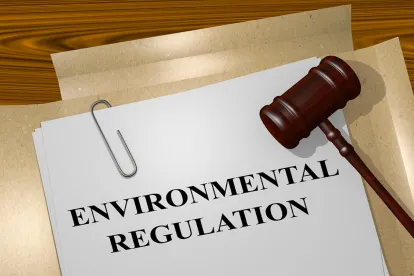On June 15, 2022, the EPA issued Health Advisories (HAs) for five specific PFAS, including PFOA and PFOS. On July 29, 2022, the American Chemistry Council filed a petition in the Court of Appeals for the District of Columbia challenging the validity of the EPA’s PFOA and PFOS HAs. The group alleges that the EPA did not follow proper procedure in setting the HAs and that the EPA’s determinations were scientifically flawed. The petition follows closely on the heels of a similar challenge to the EPA’s HA for GenX PFAS. Industries that will be impacted by upcoming EPA PFAS regulations will closely follow the petition as it makes its way through court, as it may provide predictive indicators of arguments that will unfold as the EPA’s PFAS regulations increase.
PFAS Health Advisories
In October 2021, the EPA released its PFAS Roadmap, which stated explicit goals and deadlines for over twenty action items specific to PFAS. As part of the Roadmap, the EPA pledged to re-assess the existing Health Advisories (HAs) for PFOA and PFOS, as well as establish HAs for PFBS and GenX chemicals. In June 2022, the EPA fulfilled its promise on all fronts when it set HAs for PFOA (interim), PFOS (interim), PFBS (final) and GenX (final). While not enforceable levels for PFAS in drinking water, the EPA’s PFAS Health Advisories are nevertheless incredibly significant for a variety of reasons, including influence on future federal and state drinking water limits, as well as potential impacts on future PFAS litigation.
The levels set by the EPA’s PFAS Health Advisories were as follows:
|
PFOA |
.004 ppt |
|
PFOS |
.02 ppt |
|
GenX |
10 ppt |
|
PFBS |
2,000 ppt |
Legal Challenge To PFAS Health Advisories
On July 13, 2022, The Chemours Company filed a petition challenging the validity of the EPA’s GenX HA. On July 29, 2022, the American Chemistry Council (ACC) followed suit and petitioned to have the EPA’s HAs for PFOA and PFOS vacated. In the petition, the ACC argues that the EPA circumvented procedural requirements in the Safe Drinking Water Act by setting interim HAs for PFOA and PFOS and that the EPA is improperly attempting to create enforcement standards for drinking water that are unattainable. While the HAs themselves are not enforceable, the ACC argues that the HAs are relied upon by states when they set their own drinking water standards and signal an EPA intent to set unachievably low levels of enforceable PFAS standards at the federal level. The ACC points to recent findings by the Science Advisory Board (SAB) that criticized the EPA’s reliance on the same studies and scientific articles upon which the HAs were based.
Conclusion
Now more than ever, the EPA is clearly on a path to regulate PFAS contamination in the country’s water, land and air. The EPA has also for the first time publicly stated when they expect such regulations to be enacted. These regulations will require states to act, as well (and some states may still enact stronger regulations than the EPA). Both the federal and the state level regulations will impact businesses and industries of many kinds, even if their contribution to drinking water contamination issues may seem on the surface to be de minimus. In states that already have PFAS drinking water standards enacted, businesses and property owners have already seen local environmental agencies scrutinize possible sources of PFAS pollution much more closely than ever before, which has resulted in unexpected costs. Beyond drinking water, though, the EPA PFAS Roadmap shows the EPA’s desire to take regulatory action well beyond just drinking water, and companies absolutely must begin preparing now for regulatory actions that will have significant financial impacts down the road.




 />i
/>i

